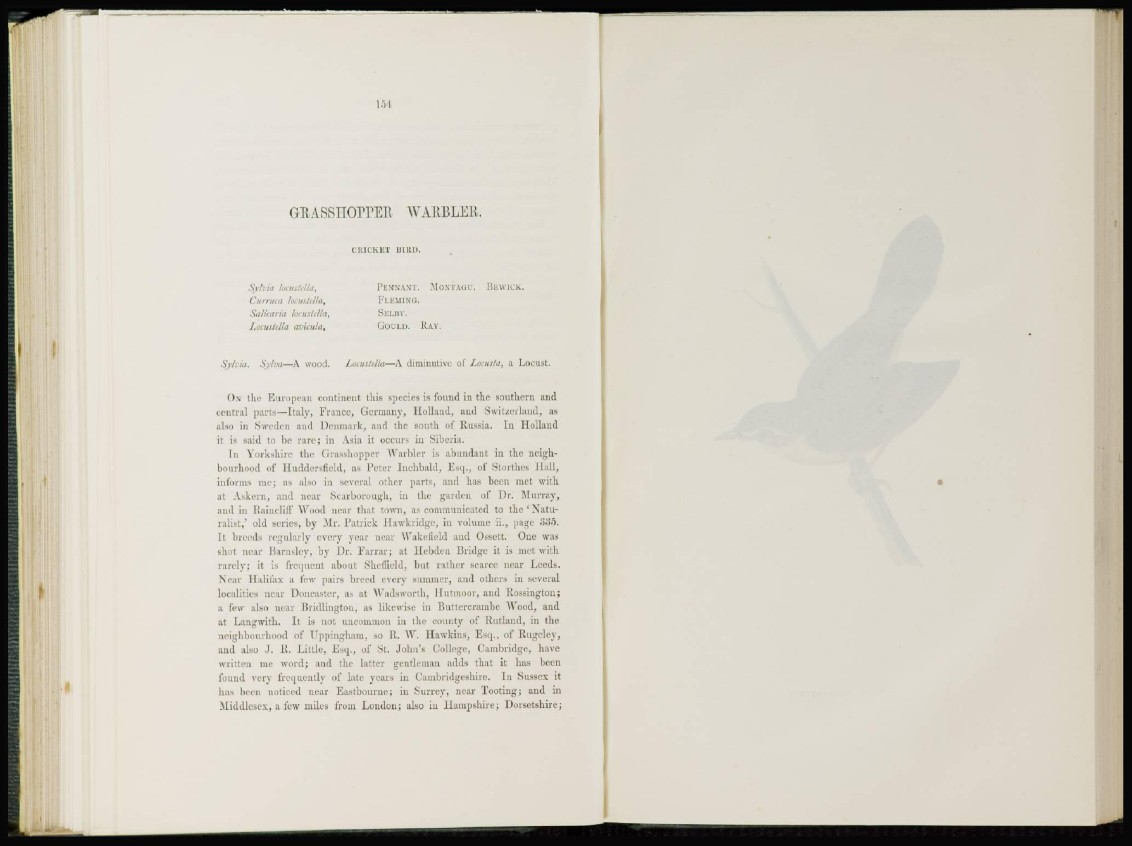
GRASSHOPPER WARBLER.
CRICKET BIRD.
Sylvia locustella,
Curruca lo, usí, ¿la,
Salicaria ¿ocustella,
l.c: ustella avienta,
PENNANT. MONTAGI . BEWICK.
FLEMING.
SELBY.
GOULD. RAY.
Sylvia. Sylva—A wood. Lonistclla—A diminutive of Loaata, ¿1 Locust.
ON the European continent this species is found in the southern and
central parts—Italy, France, Germany, Holland, and Switzerland, as
also in Sweden and Denmark, and the south of Russia. In Holland
it is said to be rare; in Asia it occurs in Siberia.
In Yorkshire the Grasshopper Warbler is abundant in the neighbourhood
of 11 iiildei'sfield, as Peter Inchbald, Esq., of Storthea Hall,
Informs me; as also in several other parts, and has been met with
at Askern, and near Scarborough, in the garden of Dr. Murray,
and in Raiucliff Wood near that town, as communicated to t h e ' N a t u ralist,'
old series, by Mr. Patrick Hawkridge, iu volume ii., page 335.
I t breeds regularly every year near Wakefield and Ossett. One was
shot near Rarnsley, by Dr. Farrar; at Hcbdcu Bridge it is met with
rarely; it is frequent about Sheffield, but rather scarce near Leeds.
Near Halifax a few pairs breed every summer, and others in several
localities near Doncaster, as at Wadsworth, Hutmoor, and Rossingtonj
a few also near Bridlington, as likewise iu Buttercram.be Wood, and
at Langwith. It is not uncommon in the county of Rutland, in the
neighbourhood of Uppingham, so R. W. Hawkins, Esq., of Rugeley,
and also J. R. Little, Esq., of St. John's College, Cambridge, have
written me word; and the latter gentleman adds that it has been
found very frequently of late years in Cambridgeshire. In Sussex it
has been noticed near Eastbourne; in Surrey, near Tooting; and in
Middlesex, a few miles from London; also iu Hampshire; Dorsetshire;